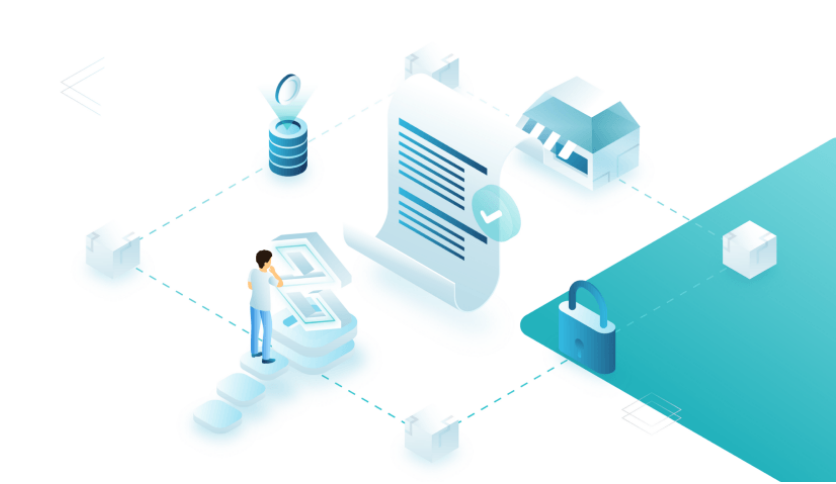If you look at the DeFi ecosystem through a wider lens, you can see that decentralized finance projects are working and developing in roughly twelve directions. Attempting to shift to a decentralized form of almost everything related to the traditional financial system also means trying to move as quickly as possible to new types of interactions with financial instruments and decentralization of these interactions.
One of the most profitable and developing sectors of decentralized finance is payment solutions, which are designed to create an open, global financial ecosystem and enable secure, stable, and fast transactions using smart contracts.

In today’s article, we will talk about applications, solutions, and protocols that allow users to make cross-border payments without intermediary fees and financially interact without having access to traditional banking systems.
DeFi and Instant Payments
The appearance of Bitcoin and blockchain technology allowed switching to crypto-based digital payment mechanisms. One such solution in the Bitcoin ecosystem was Lightning Network, developed and built as a second layer protocol. Lightning uses smart contracts to increase the throughput of the Bitcoin network.
With the advent of Lightning Network, it is possible to make instant micropayments faster and with lower fees than in the case of using the Bitcoin mainnet. In addition to cheap and instant transactions, Lightning Network reduces the “weight” of the Bitcoin blockchain and increases privacy.
The main problems that instant payments-focused projects are trying to solve are low bandwidth and high fees. The Ethereum network can currently handle about 20 transactions per second, which is not enough for the ever-growing number of users.
There are numerous ways to solve the scalability problem, such as on-chain and off-chain solutions, consensus mechanism protocols, increasing the block size, and more. The variety of such solutions and a number of approaches to their implementation led to the creation of a large number of projects working on instant, cross-border payments with low fees and the use of smart contracts.
Celer Network
Celer Network is a second layer scaling platform for fast and secure off-chain transactions and smart contracts. Celer is a system operating on top of the blockchain, with a multi-layer architecture to provide a high level of scalability and flexibility while maintaining security and privacy aspects.
Celer allows developers to quickly create and manage scalable dApps. The internal CELR token, in addition to being used as a platform currency, is used in PoLC, a bid system where users can block tokens to provide liquidity, as well as in LiBA auctions to maintain liquidity mechanisms.

Celer can be integrated into any existing blockchain and is already supported by EVM-based blockchains. The platform provides users with the ability to interact with dApps 10,000 times faster, to make instant payments, trade on exchanges, or use prediction markets.
Matic Network
Matic Network decentralized platform, whose developers offer a solution for creating Plasma sidechains, stands out in the variety of proposed solutions to increase blockchain scalability.
These sidechains function through a decentralized network of Proof-of-Stake (PoS) validators, who support the system in exchange for rewards.

Plasma is used to secure digital assets as well as ERC-20 and ERC-721 tokens on the mainnet. Sidechains can be used to support decentralized financial protocols available in the Ethereum ecosystem.
Matic developers create an ecosystem consisting of mobile applications, wallets, and extensions for easy and convenient transfer and storage of assets. Matic provides a user interface and payment API for dApps, users, and developers. Atomic swaps and Matic smart contracts will allow users to pay with any token, and the network can be used to exchange tokens with each other by using a liquidity pool.
xDAI Stable Chain
The first xDAI Stable Chain token linked to Dai allows fast and inexpensive transactions with xDAI tokens. At the moment, this solution functions only in a DAI-xDAI bundle, but in the future, there is a potential to create many other stablecoins, such as xUSDT or xUSDC.
The technology of building cross-bridges is used to implement such a solution, where native xDAI stablecoins are created after blocking DAI tokens in a smart contract. xDAI is used both for payments and fees, with 500 transactions costing about $0.01 to execute.

The xDAI network is fully compatible with Ethereum projects and does not require complex operations by Ethereum dApp developers to merge their projects with the xDAI blockchain. There are ongoing developments to implement the zero-knowledge protocol in xDai for private transactions and reward xDAI validators via the POSDAO consensus mechanism with a separate STAKE token.
Request Network
Request is an open network for requesting transactions, allowing anyone to create, store, and access peer-to-peer payments in a decentralized network. The platform for decentralized payments Request Network allows you to perform any type of transaction, whether it is a salary payout, donation, or a repayment.

Request Network can be used for online payments eliminating third parties and high commissions, the need for billing, accounting, and auditing. The project is already working with Civic to enable user identification, as well as Kyber and 0x projects to pay for goods and services in convertible digital tokens.
Whisp
The Whisp platform is a decentralized settlement solution aimed at simplifying payment methods for freelancers and remote workers. Whisp allows users to create digital payment requests through clear payment mechanisms with the help of cryptocurrencies. Relatively easy to operate, the Whisp protocol can be used by companies to reduce payroll management tool costs, eliminate third-party service providers, and avoid delays and cancellations by traditional financial institutions.

Users can access the platform by connecting through MetaMask. Whisp supports payments using DAI, ETH, DATA, DGX, and DGD tokens. A similar solution to simplify salary payouts is the Sablier project, which can be used for payments and distribution of funds at a predetermined rate.
Future of payment solutions
Decentralized solutions in the current implementation are unable to scale at the rate of growth observed in the crypto market. Problems, such as block size limitation, slow transactions, high fees, low bandwidth, complex interface, etc., must be resolved before mass adoption kicks in.
Solutions for instant and cheap payments, with a user-friendly interface, will help popularize cryptocurrencies among new users, and decentralized financial instruments will become more focused on creating an open financial ecosystem accessible to every user around the world.










